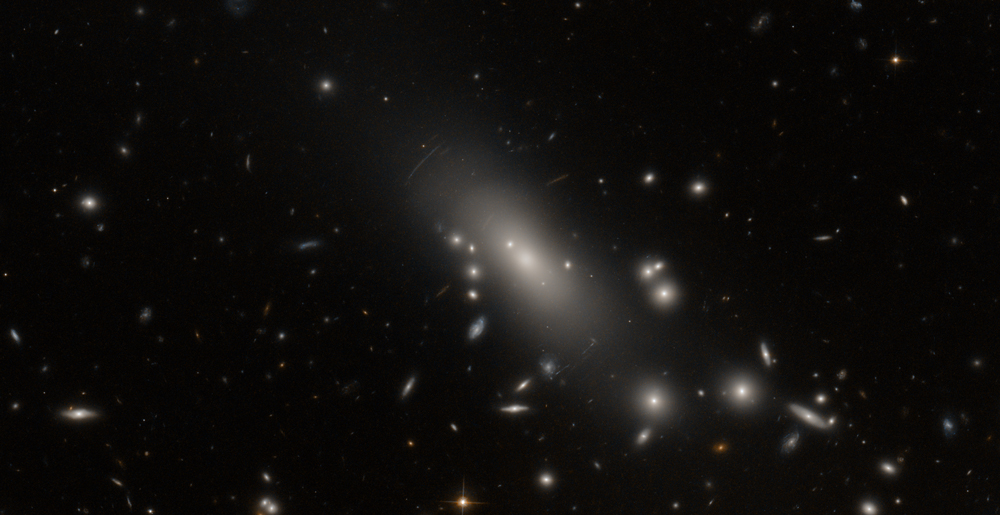
Abell 1413 (2014)
I like this cluster because there are quite a few galaxies taking up a significant amount of space in the frame along with some fainter gravitational lensing going on. The large foreground galaxy is a little weird because its core doesn’t look as dense to me as usual. You can see a bunch of the other galaxies with dense, bright cores but the big one softly and gradually brightens. It looks less “solid” if that word makes any sense in this context.
This wasn’t imaged with aesthetics in mind but rather for searching for tiny little distant galaxies and the two filters used were not separated from one another much so I teased out some color by using a saturation adjustment. This is all infrared light.
I was experimenting with noise reduction technique and managed to come up with something that smoothed it out a little without destroying the smaller galaxies or causing any to bloat out in a way they don’t actually do. It’s interesting to me that it is so hard for a computer to tell the difference between an actual galaxy signal and noise. The human mind can make the distinction effortlessly. I think if the people who managed to break every visual CAPTCHA in the world by writing complex algorithms to read garbled text better than humans took up astronomical image processing then we would have this problem solved by now. Maybe someone already did it but I don’t know about it. Well, hopefully my meager attempt does it some justice.
Red: HST_9292_05_ACS_WFC_F850LP_sci
Green: Pseudo
Blue: HST_9292_05_ACS_WFC_F775W_sci
North is NOT up. It is 50.6° counter-clockwise from up.
Copyright information:
Hubble data is public domain, but I put a lot of work into combining it into beautiful color images. The minimal credit line should read: NASA / ESA / J. Schmidt

This work is licensed under a Creative Commons Attribution 3.0 Unported License.


